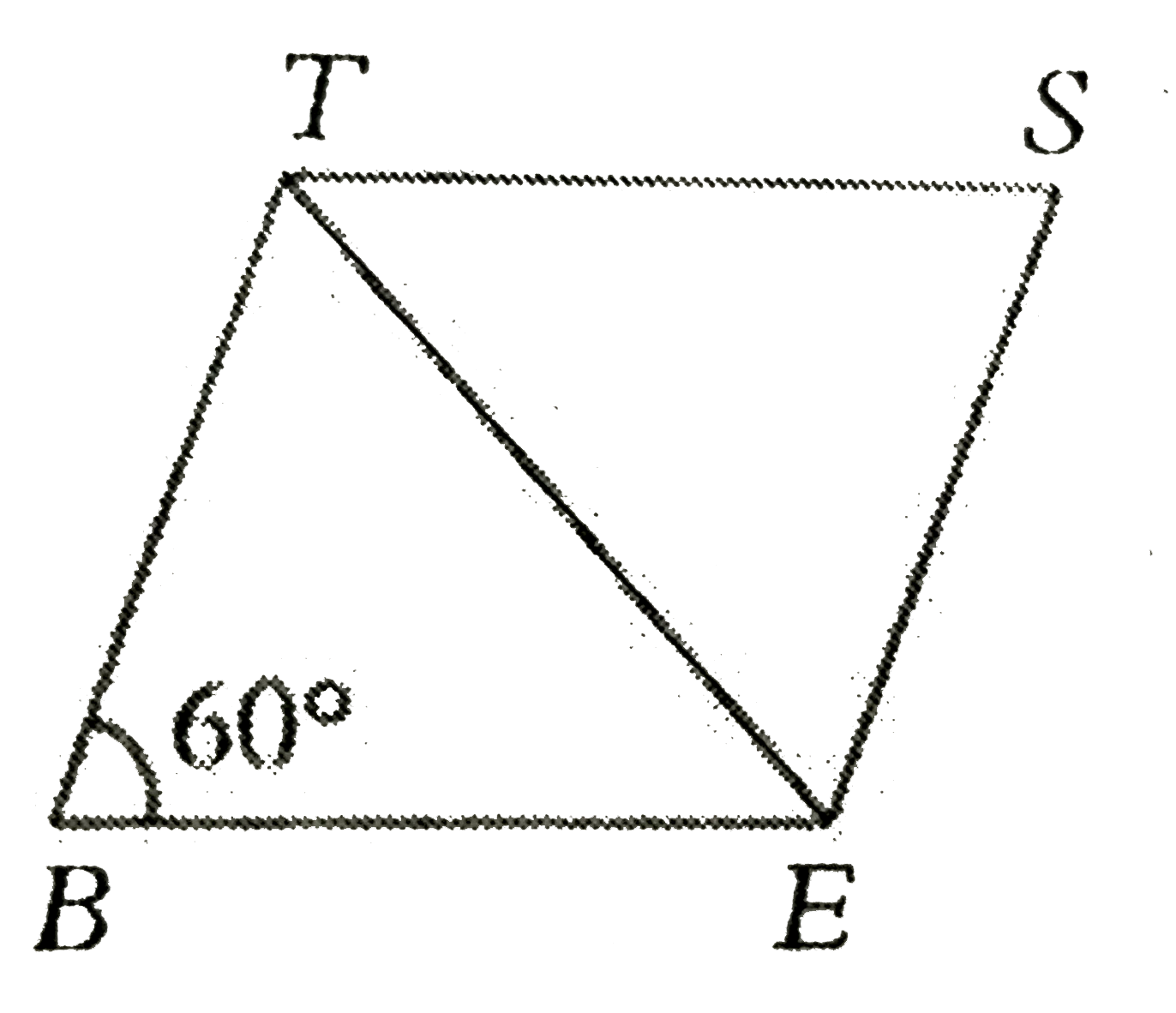
In a rhombus BEST,if ∠B=60∘ and BT=6cm, then find the length of the diagonal TE.
The following are the steps involved in solving the above problem. Arrange them in sequential order.
(A) ⇒Δ BTE is an equilateral triangle.
(B) Join T and E
(C ) In ΔBET,BT=BE⇒∠BTE=∠BET=180∘−60∘2=60∘(∵∠B=60∘) .
(D) TE=6cm
A
BCAD
B
BCDA
C
BACD
D
BADC
Video Solution
Text Solution
The correct Answer is:A
(B),(C ) ,(A) and (D) is the required sequential order.
|
Updated on:21/07/2023
Related Playlists
- BOOK - PEARSON IIT JEE FOUNDATIONCHAPTER - GEOMETRY EXERCISE - Level 220videos
GEOMETRY
- BOOK - PEARSON IIT JEE FOUNDATIONCHAPTER - GEOMETRY EXERCISE - Level 37videos
GEOMETRY
- BOOK - PEARSON IIT JEE FOUNDATIONCHAPTER - GEOMETRY EXERCISE - Essay type Question3videos
GEOMETRY
- BOOK - PEARSON IIT JEE FOUNDATIONCHAPTER - FormulaeEXERCISE - Level 37videos
Formulae
- BOOK - PEARSON IIT JEE FOUNDATIONCHAPTER - INDICESEXERCISE - CONCEPT APPLICATION (Level 3)7videos
INDICES
Similar Practice Problems
- Question 1 - Select One

In a rhombus BEST,if ∠B=60∘ and BT=6cm, then find the length of the diagonal TE.
The following are the steps involved in solving the above problem. Arrange them in sequential order.
(A) ⇒Δ BTE is an equilateral triangle.
(B) Join T and E
(C ) In ΔBET,BT=BE⇒∠BTE=∠BET=180∘−60∘2=60∘(∵∠B=60∘) .
(D) TE=6cmABCADBBCDACBACDDBADC - Question 1 - Select One
If 169 =b2+25 then find the value of b .The following sentences are the steps involved in solving the above problem .Arrange them in sequential order from the first to the last
ABACBBCACCABDACB - Question 1 - Select One
If tan(A+B)=1andA(−B)=1√2, then find A and B.
The following are the steps involved in solving the above problem. Arrange them in sequential order.
(A) tan(A+B)=1⇒tan(A+B)=tan45∘andsin(A−B)=1√2⇒sin(A−B)=sin45∘.
(B) 2A=90∘⇒A=45∘.
(C ) A+B=45∘andA−B=45∘.
(D) ∴A=45∘andB=0∘.ADBCABCABDCACDBDACBD - Question 1 - Select One
The perimeter of an equilateral triangle is 60m. The area is
A10√3 m2B15√3 m2C20√3 m2D100√3 m2 - Question 1 - Select One
If n(A)=6 and n(B)=8 and n(A∩B)=4, then find n(AΔB).
The following are the step involved in solving the above problem . Arrange them in sequnential order.
(a) n(A∪B)=n(A)+n(B)−n(A∩B)
(b) n(A∪B)=10
(c )n(A∪B)=6+8−4
(d) n(AΔB)=10−4=6
(e) n(AΔB)=n(A∪B)−n(A∩B).AABCDEBACBEDCACEBDDAEBCD - Question 1 - Select One
The perimeter of an equilateral triangle is 60m. The area is
A10√3m2B15√3m2C20√3m2D100√3m2 - Question 1 - Select One
If cos(A−B)=12andsin(A+B)=√32, then find A and B
The following are the steps involved in solving the following problem. Arrange them in sequential order.
(A)2A=120∘⇒A=60∘
(B) ∴A=60∘,B=0∘.
(C ) cos(A−B)=12⇒cos(A−B)=cos60∘andsin(A+B)=√32⇒sin(A+B)=sin60∘.
(D)A+B=60∘andA−B=60∘.ADCABBCADBCDCBADCDAB

